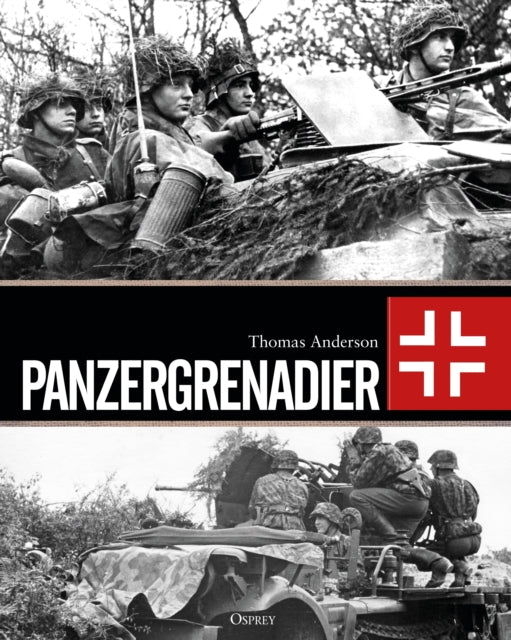Panzergrenadier
Usually shipped within 24 hours
UK deliveries from £5.95
Delivery & Returns
Delivery & Returns
We use the Royal Mail, DHL Express or UPS for our customers. For UK addresses, deliveries under 10kg are a standard £4.95 via Royal Mail Tracked 48 Service. For orders over 10kg and overseas customers, postage is calculated for you at checkout once you have entered your postal address. This price, does not include any potential custom charges that may apply, depending on the product or destination, as every country has very different import duties / taxes. Online exclusive products (such as trainers) will be delivered to you directly from the printer, separate from other items in your order, but your postage fee covers ALL items in your order.
If you are unhappy with your purchase, please email shop@tankmuseum.org within fourteen (14) working days of receiving your goods, and return it to us at the address below, in its original condition, unopened (with any seals and shrink-wrap intact) and we will issue you a full refund or replace it. Goods must be returned at your own cost. If the item is faulty, you do not need to return it, we will send you a replacement free of charge.
Description
Description
By Thomas Anderson
Throughout history, infantry has been the main attacking force deployed by armies around the world, but positioning substantial infantry forces has always required precious time to assemble the troops to launch an attack or form defensive positions.
Transportation of men and their equipment has been a major issue through the ages, and one that was only partly alleviated by the establishment of railway systems in the 19th century and motor vehicles in the early 20th century. With the development of the German Panzerwaffe, military planners realized both the enormous potential of the tank as a breakthrough weapon, but also the issues faced by support units following the attacking force - including the infantry.
A tank assault moved rapidly forwards and this required a motorized infantry which could keep pace with the attack and provide all necessary support. This motorized infantry element for a Panzer division was an integral Schutzenbrigade (rifle brigade), and it was equipped with a suitable means of transport - the Schutzenpanzerwagen (armoured personnel carrier). During Operation Barbarossa, German forces were faced by the Red Army and unforeseen weather conditions.
With the onset of the harsh Russian winter the operation failed, and the war in the east entered a new phase. From experience gained from the operation, a new arm of the military was created: the Panzergrenadier. This groundbreaking book describes the development and evolution of the armoured infantry force that accompanied the German Panzers as they crossed the battlefields of Europe, as well as detailing the vehicles and equipment that were developed to support their specialized role.
![Panzergrenadier Book [variant_option4]](http://tankmuseumshop.org/cdn/shop/products/9781472841797.jpg?v=1748336958&width=1214)

![Panzergrenadier Book [variant_option4]](http://tankmuseumshop.org/cdn/shop/products/9781472841797.jpg?v=1748336958&width=88)
![Tank Museum Playing Cards Game [variant_option4]](http://tankmuseumshop.org/cdn/shop/files/ProductShoot_10_10_2025035.jpg?v=1760358498&width=176)
![Tank Museum Wrapping Paper - Two sheet pack Wrapping Paper [variant_option4]](http://tankmuseumshop.org/cdn/shop/products/Wrapp_Paper_All.jpg?v=1748337915&width=176)
![Panzergrenadier Book [variant_option4]](http://tankmuseumshop.org/cdn/shop/products/9781472841797.jpg?v=1748336958&width=640)



